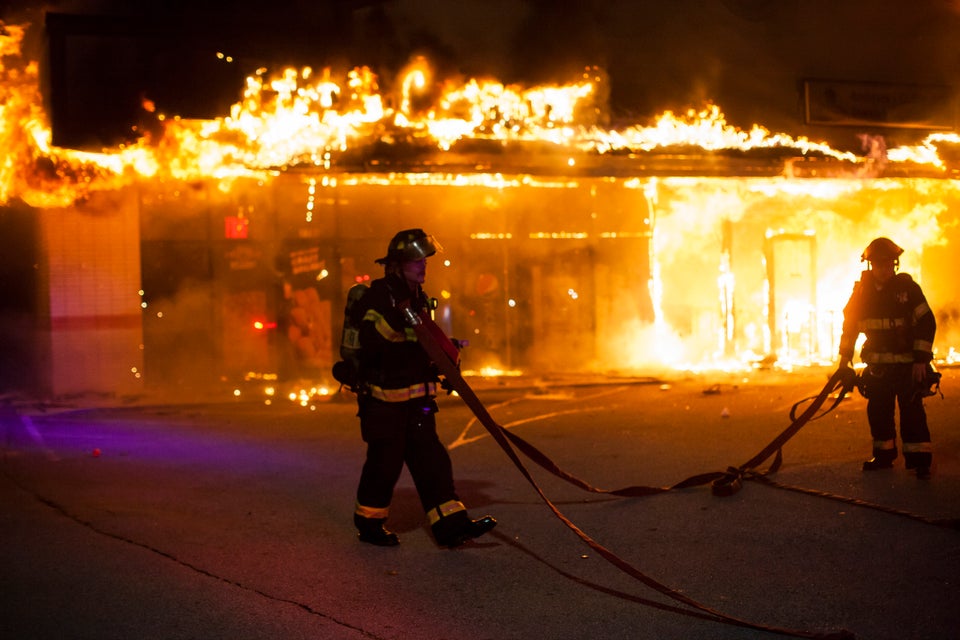ST. LOUIS ― A St. Louis County police officer who helped wrongfully arrest two journalists during the August 2014 protests in Ferguson, Missouri, also refused to give his name when detaining them, according to investigative reports obtained by The Huffington Post. Instead of offering his name, the officer gave the alias, “Donald Duck.”
Two years ago, police habitually violated the rights of hundreds of protesters and bystanders during the protests by ordering them to keep moving. The unconstitutional order that came to be known as the “6-second rule” was quickly banned by Chief U.S. District Judge Catherine D. Perry, who said it could not be used by police patrolling the protests that erupted after the killing of Mike Brown.
In the investigative reports, St. Louis County Police Officer Brian Gailis said officers had to “consistently order groups to move and not stand around because they did not want them to eventually attract more protesters, who could eventually flow into West Florissant and create an even greater chance of a protester and/or police officer being struck by a vehicle.”
Despite the ruling against the 6-second rule, dozens of people were charged and issued warrants. HuffPost requested over a dozen investigative reports of people arrested and charged with “interfering with a police officer.” The St. Louis County Police Department has only provided two copies so far ― one for journalist Ansgar Graw and another for journalist Frank Hermann. At least two dozen journalists were arrested during the Ferguson unrest.
St. Louis County Lt. Jeff Burk said so few reports were provided because the cases were closed due to ongoing investigations, and referred HuffPost to a Missouri statute on limited access to closed records.
In the reports, St. Louis County Officer Marcial Amaro admitted to telling Graw his name was Donald Duck, but claimed it was only because he thought Graw was a reporter who had joked about the Disney character prior to the arrest.
“One of the reporters asked the officers if he walked like ‘Donald Duck’ would he be able to avoid arrest,” the report says. “The reporter then began to walk in circles, mimicking the gait of a duck. The reporters began to move again and Amaro moved away from this location.”
Graw, a contributor with German national daily newspaper Die Welt, is one of four journalists who settled a $75,000 federal civil rights lawsuit with St. Louis County Police over their arrests. The journalist agreed to not “take any steps to publicize any of the terms” in the settlement.
Gailis said in the report that during the protests, “the media would rile up the protesters because some of the protesters would suddenly turn and yell at the police.”
But St. Louis County Detective Robert Wolff, the reporting officer for the investigation, describes Gailis’ actions differently. “Officer Gailis did not accuse the media of inciting the protesters with any of their questions or causing a traffic hazard by conducting their interviews,” he writes in the report. “He just did not want anyone getting injured or killed as a result of the crowds of protesters flowing onto an actively traveled West Florissant Avenue. Hence, the reason for asking the groups of protesters as well as the media to keep moving.”
Despite two orders from the DOJ, officers patrolling protests declined to wear their name badges. Amaro, who completed his interview for the investigative report 10 months after the incident, was not disciplined for providing false identification to Graw.
According to the report, Amaro only assisted with the arrests of Graw and Hermann and it was actually two Missouri state highway troopers who arrested them. St. Louis County Police said in the investigative reports that they were not able to identify the state troopers.

